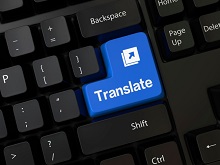Improve Translation Quality with International Translation Standards!
November 28, 2014

Although a translation is a product, it differs from manufactured goods. As such, it was previously thought that applying standards would not be possible. When you can have multiple translations of a single source document, it is difficult to determine criteria and requirements for quality.
Recently, however, a movement has emerged in the translation industry to try to implement international translation standards. This would result in developing a single set of standards for translation quality, which had previously been difficult to measure. By understanding and applying such international standards, both translation service providers and clients will be able to achieve translations that more accurately align with the purpose of the translation.
What is ISO 17100 "Requirements for Translation Services?" - The Present and Future of Translation Standards
International Organization for Standardization (ISO) is an international body that sets international standards and guidelines. International standards refer to international specifications and norms for things such as product sizes and performance evaluations. Examples include battery sizes (e.g. AA, AAA) and paper sizes (e.g. A3, A4). Such standards help ensure that international trade runs smoothly.
In Europe, where demand for translation services is high, the translation industry sought to set standards for translation quality early on. In 2006 the European Committee for Standardization (CEN) established EN 15038--a European quality standard for translation service providers. It lays out the process specific to translation needed to achieve high quality translations. Based on the track-record and experience of EN 15038, ISO 17100 is the international quality standard for translation services currently being discussed in one of the ISO technical committees and is expected to be published as early as 2014.
Requirements for Accurate and Detail-oriented Translations
Within the international translation community it is commonly understood that the best translations are produced by native speakers of the target language. In terms of Japanese to English translations, this means that the best translations are produced by native English speakers who are proficient in Japanese, and it is not recommended for translations to be done by native Japanese speakers who are proficient in English. This is echoed in the formal international guidance for translation projects created by experts from the US and Europe in 2012.
However, the kind of translation that is needed depends on the circumstances and contents. If the purpose is simply to convey the information within, then it may be acceptable if the wording of the translation is awkward as long as the meaning is faithful to the source text. With Japanese to English translations, it is preferable for it to be translated by a Japanese person with in-depth understanding of the source text. But if the objective is for the translation to be clear and easy to read for the target reader, then it would be better to have it translated by a native English speaker. When ordering translation services, it is important to clearly specify what the translated text will be used for and what your priorities are. Then the translation service provider can find the translator who is best suited for the project. In order to efficiently produce translations that meet the objectives, it is essential that the provider understand them at the initial stages.
The Translation Industry Evolving to Provide Better Translations
The time has come for the translation industry as a whole to prepare for the imminent release of ISO 17100. Providing translations that meet ISO 17100 standards will help improve both quality and sales. To clients, we ask that you clearly state what the purpose of the translation is when ordering translation services. This is the quickest way to ensure the resulting translation will be aligned with those objectives.
Related Services
| << Rising Demand for Chinese Translators and Interpreters - Difficulties and Future Landscape | Leveraging Translation Memory Tools to Improve Translation Quality >> |
To Contact Us Regarding Our Translation Services
For urgent needs, call:
+81-3-5730-6133
